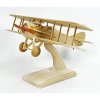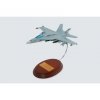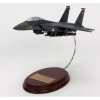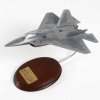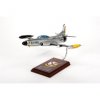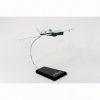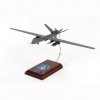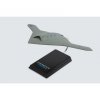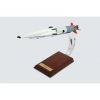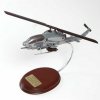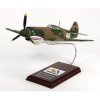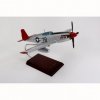- 1:18 Scale Diorama
- Domo
- Ghost Busters
- Signs
- 1:18 Scale Figures Diorama
- Featured
- 1/6 Scale Figures
- Superheroes
- Other Superheroes
- Broadsword Comics
- Dark Horse
- DC Superheroes
- Arrow (TV Series)
- Batman Figures, Statues & Vehicles
- Batman The Dark Knight Rises
- DC Reign of Superman
- Blackest Night
- Brightest Day
- DC 1/6 Scale Collector Figure
- DC Apparel & Accessories
- DC Armory Action Figures
- DC Eaglemoss Lead Figurines
- DC HeroClix
- DC Jewelry
- DC New Frontier
- DC Props
- DC Statues & Busts
- DC Universe Classics
- Dc Universe All Stars Series 2
- DC Universe Classics 2 Packs
- DC Universe Classics All Star
- Dc Universe Classics Exclusive
- DC Universe Classics Stands
- DC Universe Classics Wave 05
- DC Universe Classics Wave 06
- DC Universe Classics Wave 07
- DC Universe Classics Wave 08
- DC Universe Classics Wave 11
- DC Universe Classics Wave 12
- DC Universe Classics Wave 13
- DC Universe Classics Wave 15
- DC Universe Classics Wave 16
- DC Universe Classics Wave 17
- DC Universe Classics Wave 18
- DC Universe Classics Wave 19
- DC Universe Classics Wave 20
- DC Universe Origins
- DC Unlimited
- DC Vinyl Figures
- Elseworlds
- The Flash (2014 TV Series)
- Flashpoint
- Green Lantern Action Figures
- Green Lantern Classics
- History Of The DC Universe
- JLA Classic Icon
- JLA Classified
- Justice League Alex Ross
- Justice League International
- Justice League New Frontier
- Justice League Of America
- Justice League Unlimited
- Justice Society Of America
- Just-Us-League Of Stupid Heroes
- Metal Sign
- Neon Signs
- New Gods
- Retro Action DC Superheroes
- Shazam Action Figures
- Shazam Series Figures
- Showcase Presents
- Super Squad
- Superfriends
- Superman / Batman
- Superman Figures
- Superman Last Son
- Teen Titans
- Watchmen
- Wonder Woman Figures
- Young Justice
- Image Comics
- Marvel Superheroes
- Apparel
- Comic Book Characters (non SuperHero)
- Comic Books Magazines & Books
- Alex Ross - Signed Comics
- Batman
- Blackest Night Books
- Brightest Day
- Comic Book Supplies
- DC Archives Hardcover Books
- Godzilla
- Green Lantern
- Green Lantern Corps
- Hard Cover Books
- Magazines
- Marvel Comic Book
- Omnibus
- Power Girl
- Superman
- Superman Batman
- The Torch
- Trade Paper Backs
- True Blood
- Watchmen And Related
- Wonder Woman
- WWE Heroes
- Designer Toys
- Diecast
- Disney
- Dolls
- Exclusives
- G.I. Joe
- 25th Anniversary Single Pack
- GI Joe 2012 Subscription Figures
- GI Joe Retaliation
- Accessories
- Battle Packs
- Comic 2 Packs
- DTC Joes
- G.I. Joe 3 Packs
- G.I. Joe Exclusives
- G.I. Joe Vehicles
- Gi Joe 30th Anniversary
- Hall Of Heroes
- Loose G.I. Joes
- Rise Of Cobra
- Sideshow
- Sideshow G.I. Joe
- Vintage 3 ¾ G.I. Joe
- Games
- Horror.... Enter If You Dare!
- Kids
- Lego
- Mez-Itz
- Mighty Muggs
- Military
- Mini Helmets
- Minimates
- Back To The Future
- Battlestar Galactica Minimates
- DC Minimates
- Marvel Minimates
- MARVEL MINIMATES SERIES 73
- Marvel Minimates 44
- Marvel Minimates Series 62
- Marvel Minimates Series 64
- Marvel Minimates Series 66
- Marvel Minimates Series 70
- Marvel Minimates Wave 65
- Marvel Minimates Wave 68
- Marvel Minimates Wave 69
- Marvel Minimates Wave 72
- Marvel Minimates Wave 74
- Marvel Minimates Wave 75
- Marvel Minimates: Wave 67
- marvel minimates wave 71
- Marvel Minimates 55
- Marvel Minimates 60
- Marvel Minimates Best Of' Wave 03
- Marvel Minimates Series 54
- Marvel Minimates Series 56
- Marvel Minimates Series 57
- Marvel Minimates Wave 58
- Marvel Minimates Wave 59
- Marvel Minimates 52
- Marvel Minimates series 48
- Marvel Minimates Series 49
- Marvel Minimates Series 49
- Marvel Minimates series 50
- Marvel minimates series 51
- Marvel Minimates Series 53
- Marvel Minimates 45
- Marvel Minimates 46
- Marvel MInimates Series 47
- Marvel 41 Minimates
- Marvel Minimates Series 43
- Marvel Minimates 14 X-Men The La
- Marvel Minimates 17 Spiderman 3
- Marvel Minimates 18 Spiderman 3
- Marvel Minimates 20
- Marvel Minimates 22 Hulk
- Marvel Minimates 23
- Marvel Minimates 26 Wolverine
- Marvel Minimates 29
- Marvel Minimates 30
- Marvel Minimates 37
- Marvel Minimates 39 (Thor Movie)
- Marvel Minimates 40 (Captain America Movie)
- Marvel Minimates 42
- Marvel Minimates Boxed Sets
- Marvel Minimates Exlusives
- Marvel Minimates Iron Man 2
- Minimates wave 61
- Others
- Star Trek Minimates
- Street Fighter 2 Minimates
- The Man With No Name
- Model Airplanes
- More Statues
- Musical Artist Figures
- Novelty items
- Other Great Products
- ReAction 3 3/4-Inch
- Robots
- Space
- Sports Action Figures
- Baseball cards
- Bobble Heads
- Lucha Libre
- Oyo
- Mini Helmets
- Sports Statues
- Mcfarlane
- College Football Series 1
- Cooperstown Collection
- Mcfarlane Collectors Edition
- McFarlane MLB
- Mcfarlane NBA
- Mcfarlane NFL
- McFarlane NFL 17 Series 1
- Mcfarlane NFL 2 packs
- NFL Series 37
- McFarlane NFL 34
- McFarlane NFL Series 35
- McFarlane NFL 32
- McFarlane NFL 33
- McFarlane NFL 30
- McFarlane NFL 31
- Mcfarlane NFL 23
- Mcfarlane NFL 24
- McFarlane NFL 26
- McFarlane NFL 27
- McFarlane NFL 28
- McFarlane NFL 29
- McFarlane NFL Elite Series 2
- McFarlane NFL Legends
- Mcfarlane NFL Playmakers
- NCAA Football Series 3
- McFarlane NHL
- UFC Jakks Figures
- UFC Round 5
- Upper Deck
- Star Trek
- Star Wars
- 12 inch Kenner Star Wars
- Star Wars Episode 7: The Force Awakens
- 12" Action Figures
- Deagostini Metal Figures & Vehicles
- Lego Star Wars
- More Star Wars Items
- Sideshow Collectibles Star Wars
- Star Wars Comic Packs
- Star Wars Exclusives
- Star Wars Kotobukiya ARTfx Vinyl Statues
- Star Wars Props
- Star Wars Statues
- The Clone Wars
- The Vintage Collection
- Ultimate Quarter Scale
- The Big Bang Theory
- TV, Movie And Music Props
- TV/Movie
- 24
- Pacific Rim
- Despicable Me
- Hunger Games
- Hunger Games
- Tintin
- Adventure Time
- Game of Thrones
- Hanna Barbera
- The Big Bang Theory
- 9
- A Nightmare On Elm Street
- A-Team
- Alice In Wonderland
- Alien
- Anime
- Avatar
- Back To The Future
- Batman
- Battlestar Galactica
- Bleach
- Bobble Heads
- Boondock Saints
- Breaking Bad
- Bruce Lee
- Buffy The Vampire Slayer
- Captain America: The First Avenger
- Clash Of The Titans (2010)
- Conan The Barbarian
- Dexter
- Dr. Who
- Dragonball Evolution
- Fables
- Family Guy
- Flash Gordon
- Futurama
- Generator Rex
- Ghostbusters
- Godfather
- Godzilla
- Green Lantern Movie
- Gremlins
- Grindhouse
- Harry Potter
- Historical Figures
- Indiana Jones
- Iron Man
- Jay And Silent Bob
- Jonah Hex
- Kamen Rider
- Kick Ass
- Kick-Ass
- Kill Bill
- Lost
- Masters Of The Universe
- Naruto Shippuden
- Office Space
- One Piece
- Other
- other tv/movies
- Pirates of the Caribbean
- Planet Of The Apes
- Political Collectibles
- Power Rangers
- Predators
- Pulp Fiction
- Reservoir Dogs
- Robocop
- Rocky
- Regular Show
- Saint Seiya
- Scarface
- Sesame Street
- Sin City
- South Park
- Stargate
- Sucker Punch
- Sweeney Todd: The Demon Barber of Fleet Street
- Teenage Mutant Ninja Turtles
- Terminator
- The Big Lebowski
- The Dukes of Hazzard
- The Expendables
- The Fifth Element
- The Simpsons
- The Twilight Zone
- The Venture Brothers
- The Walking Dead
- Thor Movie
- Thundercats
- Thundercats
- Torchwood
- Toy Story
- Transformers
- Tron
- True Blood
- Twilight
- Where The Wild Things Are
- United and Atlanta Cutlery
- Video Game Figures Statues and Props
- Alice: Madness Returns
- Dc Injustice
- Team Fortress
- Armored Cor for Answer
- Assassins Creed
- Bayonetta
- Bioshock
- DC Universe Online
- Deus Ex
- Devil May Cry
- Final Fantasy
- Gears Of War
- God Of War
- Half Life
- Halo
- Kud Wafter
- Legends of Zelda
- Mass Effect 2
- Mass Effect 3
- Mass Effect series 1
- Megaman
- Metal Gear Solid
- Mortal Kombat
- Other Game Figure And Statues
- Resident Evil
- Shining Wind
- Sonic The Hedgehog
- StarCraft
- Street Fighter
- Super Mario Brothers
- To Heart
- World Of Warcraft
- Wall Applique Posters
- WWE
- WWE Jakks
- Accessories For Figures
- Adrenaline
- Build N'brawl
- Classic Deluxe Superstars
- Classic Superstars 2 Packs
- Classic Superstars 3 Packs
- Classic Superstars
- Collector Supplies
- DVDS
- Deluxe Aggression
- ECW
- Maximum Aggression
- Micro Aggression
- Pay Per View Series
- Ruthless Aggression
- Series 06
- Series 08
- Series 11
- Series 12
- Series 12.5
- Series 13
- Series 14
- Series 15
- Series 16
- Series 16.5
- Series 17
- Series 18
- Series 18.5
- Series 19
- Series 20
- Series 21
- Series 22
- Series 23
- Series 24
- Series 24.5
- Series 25
- Series 26
- Series 27
- Series 28
- Series 29
- Series 30
- Series 31
- Series 32
- Series 33
- Series 34
- Series 35
- Series 36
- Series 37
- Series 38
- Series 38.5
- Series 39
- Series 40
- Series 43
- Superstar Gear
- Unmatched Fury
- Vinyl Aggression
- WWE 1 Of 500
- WWE Exclusives/ Limited Editons
- WWE Rings
- WWE Jewelry
- WWE Mask & Pants Replicas
- WWE Mattel
- WWE Replica Belts
- WWE Jakks
- Fathead
- TNA


